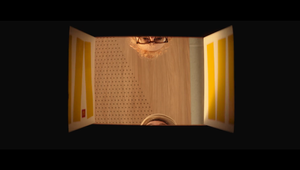
Making the Grade: Working in a Stripped Back Way with Tim Smith

Tim is an acclaimed and in demand colourist worldwide and epitomises everything No.8 Colour strives for. With a broad and diverse skillset formed and developed at The Mill, ETC, and Cheat over the last decade, Tim brings a wealth of experience, and a master creative eye. With a background in photography, Tim's love for colour and passion for collaboration is a perfect fit for the roster, and wider No.8 Team.
LBB> What was your first experience with the world of colour grading – and when did you decide that being a colourist was a role that you wanted to pursue?
Tim> The first time I was exposed to colour grading was stepping into the suites at The Mill when I first started working there as a runner a long time ago. I’d gone over there with the intention of getting into telecine/grade after a chat with Si and Ad at Academy Films (I’d been working there briefly and they suggested it would be worth me looking into that field). In coming from a photography background and working in darkrooms/doing colour printing it was a really natural progression for me.
LBB> What was the project that you felt really changed your career?
Tim> I feel like every project you work on has the ability to change your career. Each project has its own set of challenges and problems to solve, I think that is a big part of development as a colourist. The way you learn to adapt yourself to different work and people. I do feel like the first bigger TVC’s I did earlier on were pretty important, Sony Bravia with Ben Tricklebank (first time grading HDR) and Coca Cola with Stacy Wall, but also working on incredible stuff like Rebirth Is Necessary with Jenn Nkiru and Never Change for Obongjayar with Duncan Loudon. Those jobs really expanded my mind creatively and helped me lean into my own visual style, thanks to the trust from the directors and creatives on the jobs.
LBB> How/where did you hone your craft and did you have any particular mentors?
Tim> I learned a lot during my time at The Mill, people like Jim Bracher and James Bamford were really helpful to me early on. Also my time at ETC working with Aubrey Woodiwiss and Houmam Abdallah, they gave me so much valuable advice and insight that still helps me to this day.
LBB> Tell us more about your creative process
Tim> I think the general approach to look development starts with communication with DP/Director or creatives first. Whether that is with the use of visual references or just a chat to get on the same page. I like to have strong visual references as it takes away a lot of the guess work in decoding what people want. Not everyone has a visual vocabulary that can describe what they want in the best way, so it’s up to me to make sure everyone is confident and happy I understand what they want.
LBB> From experience, we’ve found that colourists often love art and photography - when you’re out of the studio, what inspires you?
Tim> I love music, photography, art, film, travel, all the regular things most creative leaning people do. I really like delving into older cinema from the late 50’s up until the mid 90s. I use these older image processes as points of reference for my grading, whether that is a particular colour density, hue or a tone curve or contrast level. Most of these older films were done with photochemical processes, which is in its own right an art, but is much less complex in comparison to modern grading techniques. I like working in a more stripped back way to create looks that feel natural and faithful, so using these older images really helps me in that way.
LBB> Colour grading is largely a digital affair, but there’s also been a resurgence of film over the past few years in commercials and music videos. What are your thoughts about working on film versus digital formats like 4K? And what are your favourite techniques for capturing a vintage or tactile feel?
Tim> It’s great that people are shooting on film. When shot well it has a wonderful way of rendering colour and a beautiful tone curve. It creates a very natural and organic feel, which can really push narrative work into a very human place. I love working on both film and digital though, as modern digital cameras like the Alexa LF and 35 are absolutely incredible in the latitude and colour depth they achieve. A lot of the time now people will want to shoot digital and emulate film to save costs as shooting film is inherently expensive. A lot of the time we get it pretty damn close to film but it is lovely when you get to work on the real thing.
LBB> How do you ensure that each colourist-director partnership is a success?
Tim> There isn’t really a way to guarantee or ensure success in that respect as people can clash creatively etc, but you can do things which will help make the relationship successful. I feel like you need to bring your own flair to a job. They’ve requested you for their job because they like what you do, so do that, don’t try and do the same grade as everyone else. You also need to make sure you’re open to collaboration and compromise as it’s not all about you and your grade in that session, it’s their work and you’re there to help them achieve their vision to the best of your ability, but also you’re going to make it stand out and feel unique.
LBB> What advice would you give to budding colourists?
Tim> Get the fundamentals down, learn the basics, listen, learn to collaborate and ask questions, don’t take critique personally, lose your ego, but most importantly be yourself. Don’t worry about what others are doing and just do what you think looks good but also what makes the client happy, it’ll serve you well in the long run.
LBB> In your opinion, what's the difference between a good grade and a great grade?
Tim> I think a great grade can be both noticeable and restrained, pushed and controlled, as long as it enhances and elevates the work. I love it when I see colour work that shows me something I’ve never seen before.















